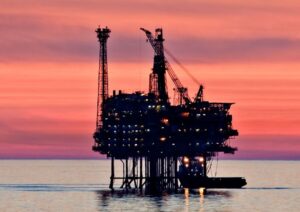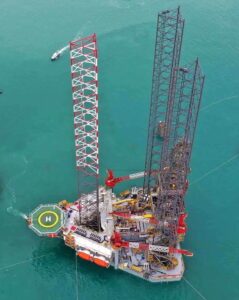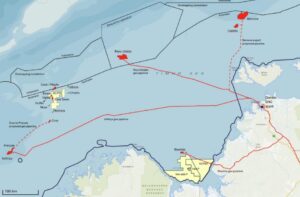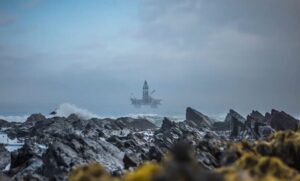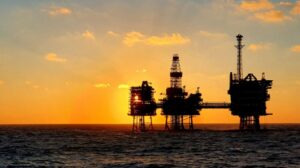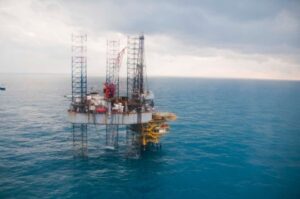Orcadian gets hold of offshore license hat-trick by closing deals with UK regulator
UK-headquartered oil and gas player Orcadian Energy has entered into binding license agreements with the North Sea Transition Authority (NSTA) for all three licenses awarded to it by the UK regulator as part of the country’s 33rd seaward licensing round.

As stated by Orcadian, the award of these three licenses, forming part of the third batch of the UK’s 33rd licensing round, has boosted its contingent and prospective resource base. This represents a formalization of the licenses provisionally awarded in May.
Related Article
The company said that it now has over 228 MMboe of 2C contingent resources and 100 MMboe of prospective resources in high-graded leads and prospects. About 14 MMbbl of these resources relate to the Pilot field where Orcadian is carried through to the first offload of production from the development as it divested an 81.25% stake in the field to Ping Petroleum in April.
Steve Brown, CEO of Orcadian Energy, said: “We are really pleased to have the license agreements in place for these three new projects. As a result, we estimate that our contingent resource base has grown to 228 MMboe with our un-risked prospective resource base now 100 MMboe. Our strategy has been to focus on the “post-transition” hydrocarbons – gas and viscous oil.
“In a shallow water mature basin, almost by definition, the big fields with great rocks and simple fluids have all already been developed, So, we concentrate on reservoirs with great rocks, while innovating around how to develop complex fluids.”
Earlham license P2680
The Earlham license, situated 100 kilometers East of Bacton, covers blocks 49/25b, 50/21a, 49/30b, and 50/26. It contains an existing discovery with a high inert gas content, called Earlham, an undrilled prospect – Clover, and a redevelopment opportunity named Orwell. The UK firm is the license administrator and holds 100% of the license.
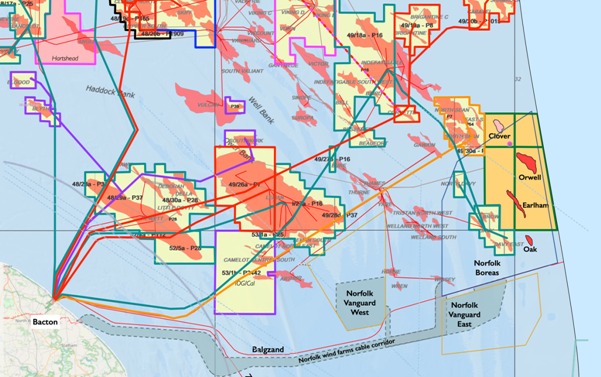
The discovery was made by well 50/26b-6 drilled in 1995 by Talisman, encountering gas in the Rotliegendes. Following appraisal work done by several players since then, Orcadian estimates that the Earlham reservoir contains 114 bcf of methane on a P50 basis. An offshore power station is planned, to be connected to the grid, possibly via a wind farm substation, with integrated CO2 capture and storage. This concept would deliver a stable and reliable supply of electricity with near-zero emissions.
“The Earlham field has a high inert gas content, which has precluded development to date, but the reservoir is proven and no further appraisal expenditure is needed. We, with our industry partner, are confident we have a solution to deal with the high level of inerts and beyond that, we believe we will be able to deliver a reliable supply of near-zero emissions power to the grid,” said Brown.
“Orcadian is no longer a one-trick pony. We have multiple pathways to success and to deliver future value to our shareholders. The Earlham project, in particular, demonstrates that our industry is capable of finding ways to exploit our natural endowment of hydrocarbons to deliver real energy security and emissions reductions.”
The Orwell field produced 309 bcf of wet gas from August 1993 to January 2009 when a subsurface safety valve failed, after which it was decommissioned. The field had been developed with three wells and the pressure data confirmed that the wells were connected to 368 bcf of gas initially in place. The reservoir pressure was about 28 bar when it was abandoned. A redevelopment is intended to provide additional gas to be used to produce near-zero emissions power in the offshore power station.
The license also contains a gas prospect called Clover, described as compelling by Orcadian. This is a four-way dip closure reservoired in Bunter sands, analogous to the Orwell field. Orcadian estimates that P50 recoverable prospective resources in Clover amount to 153 bcf, putting the geological chance of success at 38%.
Mid North Sea High license P2650
The Mid-North Sea High (MNSH) license covers blocks 29/16, 29/17, 29/18, 29/19, 29/21, 29/22, 29/23, 29/27, and 29/28. It encompasses shallow gas prospects and leads which contain up to 336 bcf of gross prospective recoverable resource on a P50 basis. Orcadian, which is the license administrator, applied for it with Australia’s Triangle Energy, both holding 50% interests.
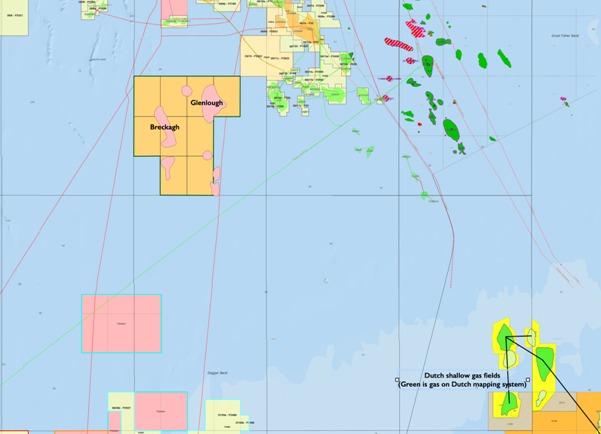
Orcadian CEO noted: “On the Mid-North Sea High, we have identified a number of shallow gas prospects with the same characteristics as the A & B block gas fields that have been successfully developed in the Dutch sector. Of course, as the reservoirs are shallow the initial reservoir pressure is correspondingly lower, so development of these gas fields starts with a need for gas compression.”
The two largest leads – Glenlough and Breckagh – are estimated to have a prospective resource potential of 131 bcf and 138 bcf, respectively. Any gas discovered could be used to power an offshore power station or could be compressed and produced via the Central Area Transmission System (CATS) line which has a nearby tie-in point.
Fynn license P2634
The Fynn license is situated in the Outer Moray Firth and comprises blocks 14/15a, 14/20d, and 15/11a. Based on the latest estimates by the operator, it contains a “substantial” viscous and heavy oil discovery which has a gross P50 contingent recoverable resource of 292 MMbbl. Orcadian holds a 50% interest in the field, the same as license operator Parkmead, which confirmed the award a month ago.
Related Article
-
UK player gets its hands on one of ‘largest remaining oil resources’ offshore Scotland
Exploration & Production
The operator intends to leverage the expertise gained in developing viscous crudes to commercialize Fynn Beauly, said to be one of the UK’s largest undeveloped discoveries. Orcadian claims oil accumulation has been proven by three wells and is estimated to contain most likely P50 gross contingent resources of 292 MMbbl, 257 MMbbl of which is on the license.
“Our viscous oil projects will all benefit from our expertise in the application of polymer flood technology. A combination of geothermal heat and polymer could unlock the Fynn development which is a project of the same scale as Rosebank,” added Brown.

As explained by Orcadian, the oil within the Fynn reservoir is viscous and made up of long-chain hydrocarbons, which means that when refined it contributes little to gasoline supplies, but is a good feedstock for lubricants, asphalt, and anode grade petroleum coke (an essential component for fast-charge EV batteries). The firm believes that gas and viscous oils will be essential hydrocarbons in the post-transition period.

